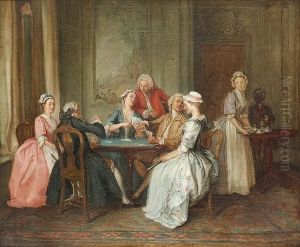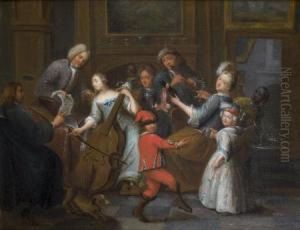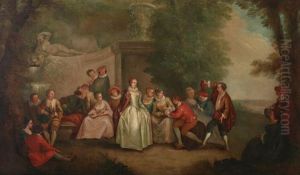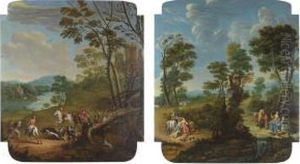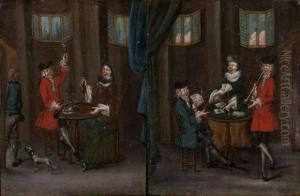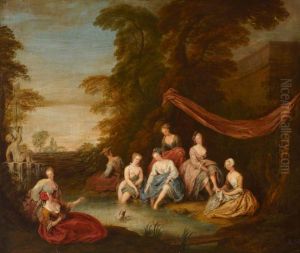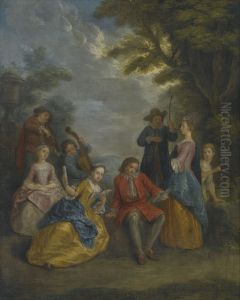Josef Frans Nollekens Paintings
Joseph (sometimes spelled 'Josef') Francis Nollekens was an English sculptor of the 18th century who is renowned for his finely crafted portrait busts and classical figures. Born on August 11, 1737, in London, Nollekens was the son of a Flemish painter, Josef Frans Nollekens, who had moved to London from Antwerp. His father's artistic background undoubtedly influenced Nollekens, who demonstrated a precocious talent for sculpture at a young age.
In his early years, Nollekens studied under the prominent sculptor Peter Scheemakers before traveling to Rome in 1762. There, he became deeply influenced by the classical sculpture of antiquity, which was being rediscovered through excavations at the time. His work in Rome earned him considerable success, and he became a sought-after artist among British tourists on the Grand Tour who desired souvenirs and portraits to bring back to England.
Nollekens returned to London in 1770 and quickly established himself as a leading portrait sculptor, particularly known for his busts. His prominent clients included members of the aristocracy and notable figures of the day such as King George III and Prime Minister William Pitt the Younger. Nollekens' work was characterized by its realistic portrayal and attention to detail, which distinguished him from many of his contemporaries. He was adept at capturing the likeness and personality of his subjects, making his busts highly prized.
His success was reflected in his election as an associate member of the Royal Academy in 1771 and a full member in 1772. Nollekens was also a prolific creator of funerary monuments, which can be found in many churches across Britain. Despite his commercial success, he was known to be miserly in his personal life, a trait that was satirized by his contemporaries.
Nollekens continued to work well into his old age, although his reputation began to decline towards the end of his career as tastes in art shifted. He died on April 23, 1823, in London. After his death, his former pupil and assistant, John Flaxman, who had become a successful sculptor in his own right, praised Nollekens' work for its 'simplicity of style and correctness of design.' Despite being less well-known today, Nollekens' sculptures remain a testament to the neoclassical style that dominated British sculpture during his lifetime.
